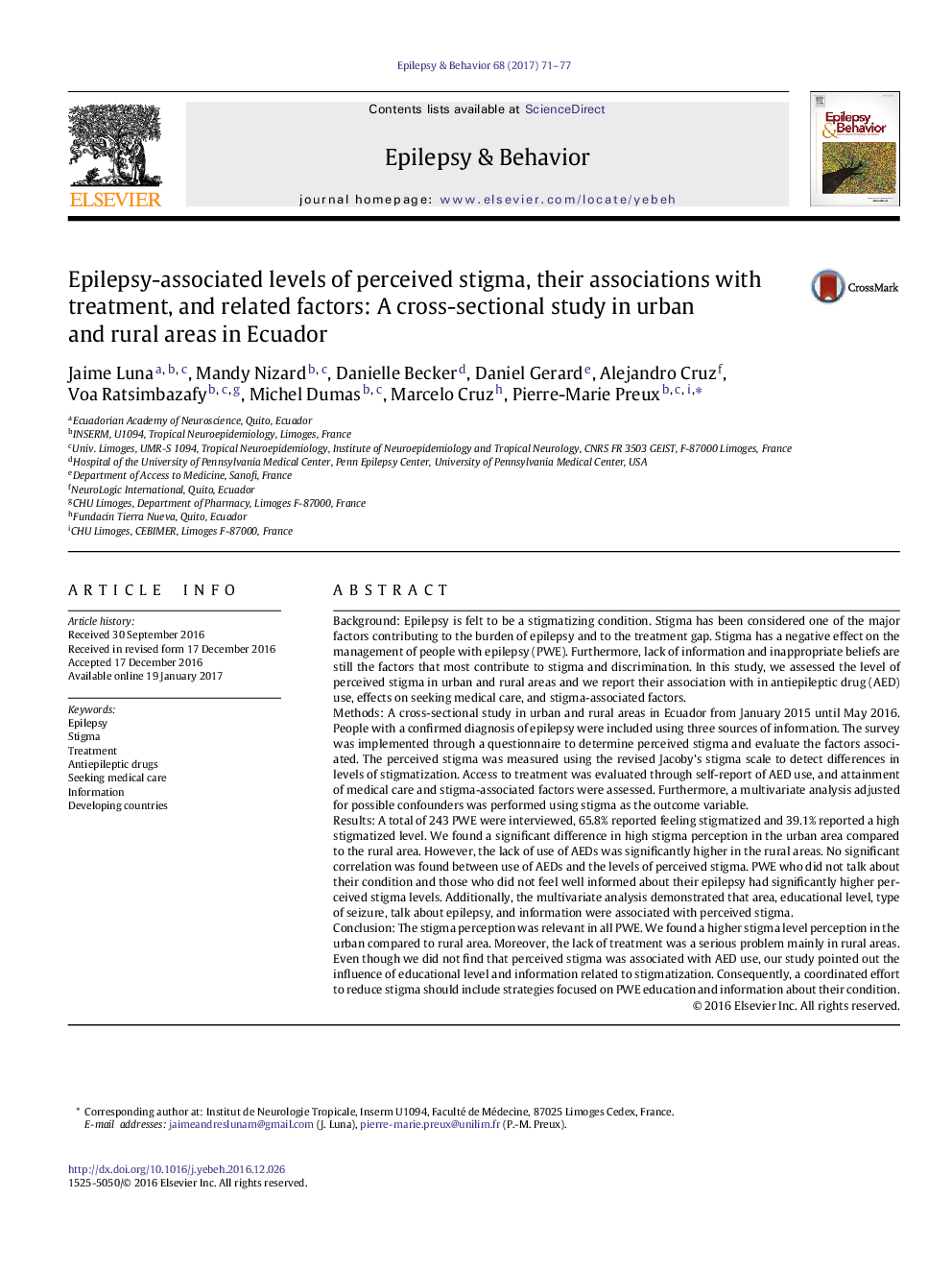| کد مقاله | کد نشریه | سال انتشار | مقاله انگلیسی | نسخه تمام متن |
|---|---|---|---|---|
| 5628043 | 1579824 | 2017 | 7 صفحه PDF | دانلود رایگان |
Background: Epilepsy is felt to be a stigmatizing condition. Stigma has been considered one of the major factors contributing to the burden of epilepsy and to the treatment gap. Stigma has a negative effect on the management of people with epilepsy (PWE). Furthermore, lack of information and inappropriate beliefs are still the factors that most contribute to stigma and discrimination. In this study, we assessed the level of perceived stigma in urban and rural areas and we report their association with in antiepileptic drug (AED) use, effects on seeking medical care, and stigma-associated factors.Methods: A cross-sectional study in urban and rural areas in Ecuador from January 2015 until May 2016. People with a confirmed diagnosis of epilepsy were included using three sources of information. The survey was implemented through a questionnaire to determine perceived stigma and evaluate the factors associated. The perceived stigma was measured using the revised Jacoby's stigma scale to detect differences in levels of stigmatization. Access to treatment was evaluated through self-report of AED use, and attainment of medical care and stigma-associated factors were assessed. Furthermore, a multivariate analysis adjusted for possible confounders was performed using stigma as the outcome variable.Results: A total of 243 PWE were interviewed, 65.8% reported feeling stigmatized and 39.1% reported a high stigmatized level. We found a significant difference in high stigma perception in the urban area compared to the rural area. However, the lack of use of AEDs was significantly higher in the rural areas. No significant correlation was found between use of AEDs and the levels of perceived stigma. PWE who did not talk about their condition and those who did not feel well informed about their epilepsy had significantly higher perceived stigma levels. Additionally, the multivariate analysis demonstrated that area, educational level, type of seizure, talk about epilepsy, and information were associated with perceived stigma.Conclusion: The stigma perception was relevant in all PWE. We found a higher stigma level perception in the urban compared to rural area. Moreover, the lack of treatment was a serious problem mainly in rural areas. Even though we did not find that perceived stigma was associated with AED use, our study pointed out the influence of educational level and information related to stigmatization. Consequently, a coordinated effort to reduce stigma should include strategies focused on PWE education and information about their condition.
Journal: Epilepsy & Behavior - Volume 68, March 2017, Pages 71-77
